Indian Skimmer: The beautiful river manager
Indian Skimmers are one of the habitat specialists and they serve as an indicator of river health. They play a crucial role in maintaining the ecological balance of the riverine ecosystem.
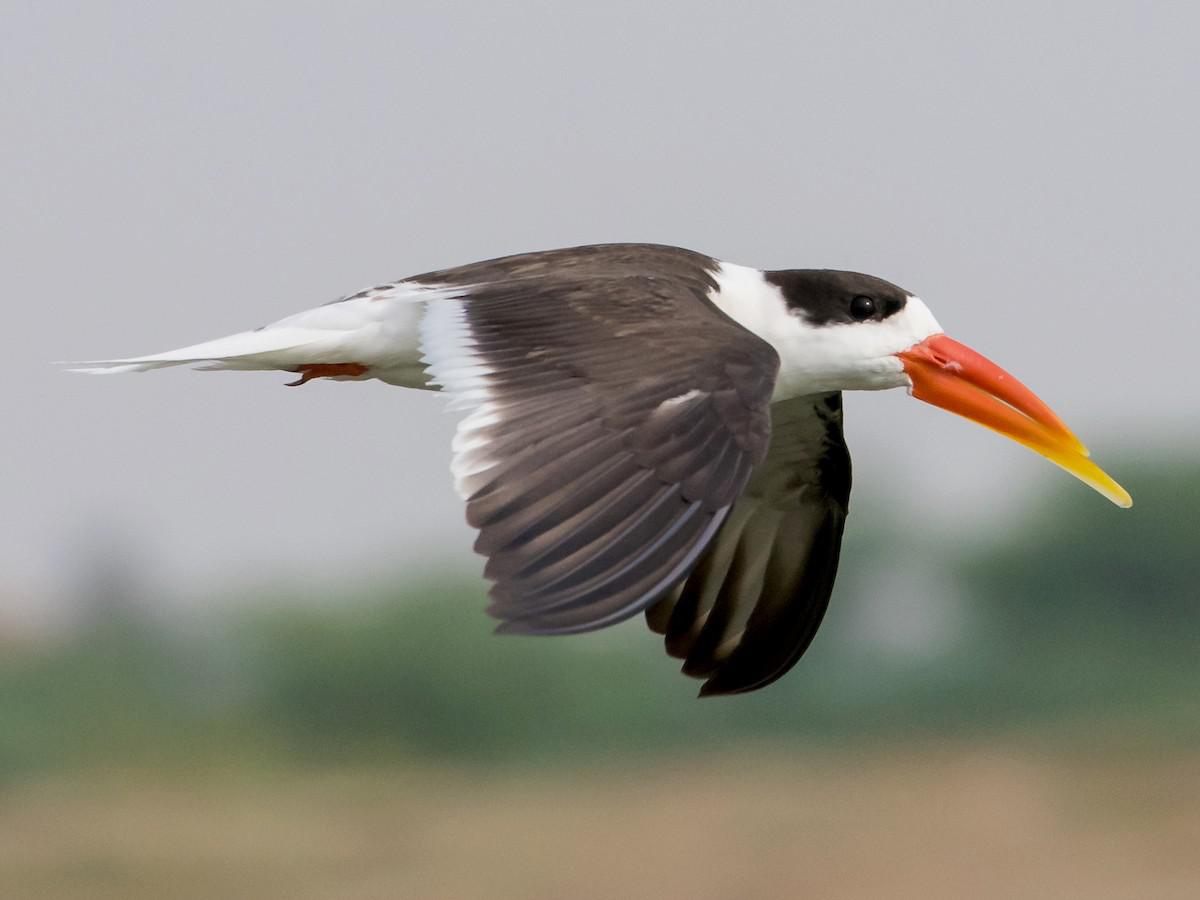
Among the three Skimmers found in the world, the Indian Skimmeror Indian scissor-bill is categorized as endangered in the IUCN (International Union for Conservation of Nature) Red List of threatened species. This rare riverine bird has got its name from its unique way of feeding, flying low over the water surface and ‘skimming’ to catch fish. It is easily identified by a black and white body with a bright orange scissorlike beak and a typical “kyapkyap” chirping sound. They have a short upper bill and a longer lower bill that is ploughed along the surface of the water as the bird flies over the water to pick fish and other aquatic prey. The longer lower mandible is perfectly adapted to its style of fishing. Indian Skimmer is crepuscular being active at dawn and dusk. It is also nocturnal and actively forages at night.
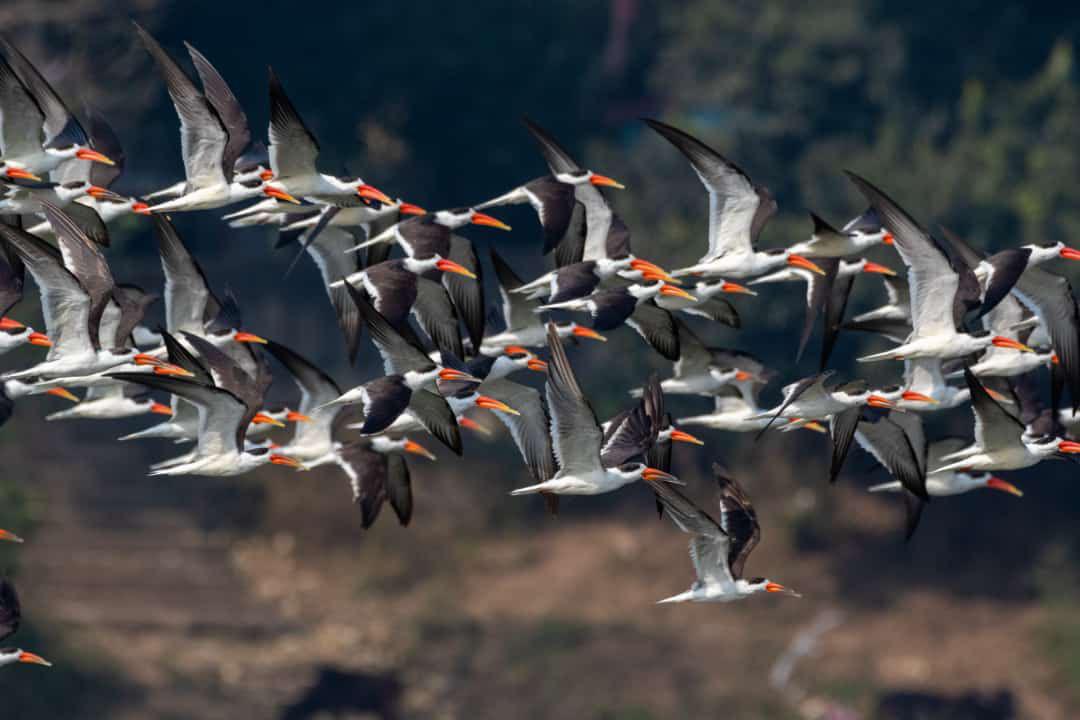
The Indian Skimmer is now almost completely restricted to specific locations in India as a breeding bird. In India, it is reported in Rajasthan, Uttar Pradesh, Madhya Pradesh, Maharashtra, Gujarat, Andhra Pradesh, Bihar and Odisha. In Odisha, the Indian Skimmers are found throughout the year in various habitats, especially in the Mahanadi Riverbelt. The species has been reported in Bhitarkanika, Nalabana in Chilika, Satkosia, Mundali&Kakhadiin Cuttack, Dhamraand Hirakud in Odisha. Local people in Odisha call it “panichiri” meaning it cuts water.
These birds are found on low-land rivers, lakes, and marshes as well as coasts and estuaries. They are social and harmless birds, often seen resting in flocks on the beach, sandbars and islands. Birds return to nesting colonies from February onwards, dependent on water levels. In India, nesting colonies exist on the rivers i.e., Chambal, Mahanadi, Ganga, Son, and Beas. They usually breed in the summer (March to June) when the water level in the rivers, goes down and the sandbars emerge. When these mid-river sandy islands are exposed enough, Indian skimmers start nesting on them and the clutch size is found to be three.
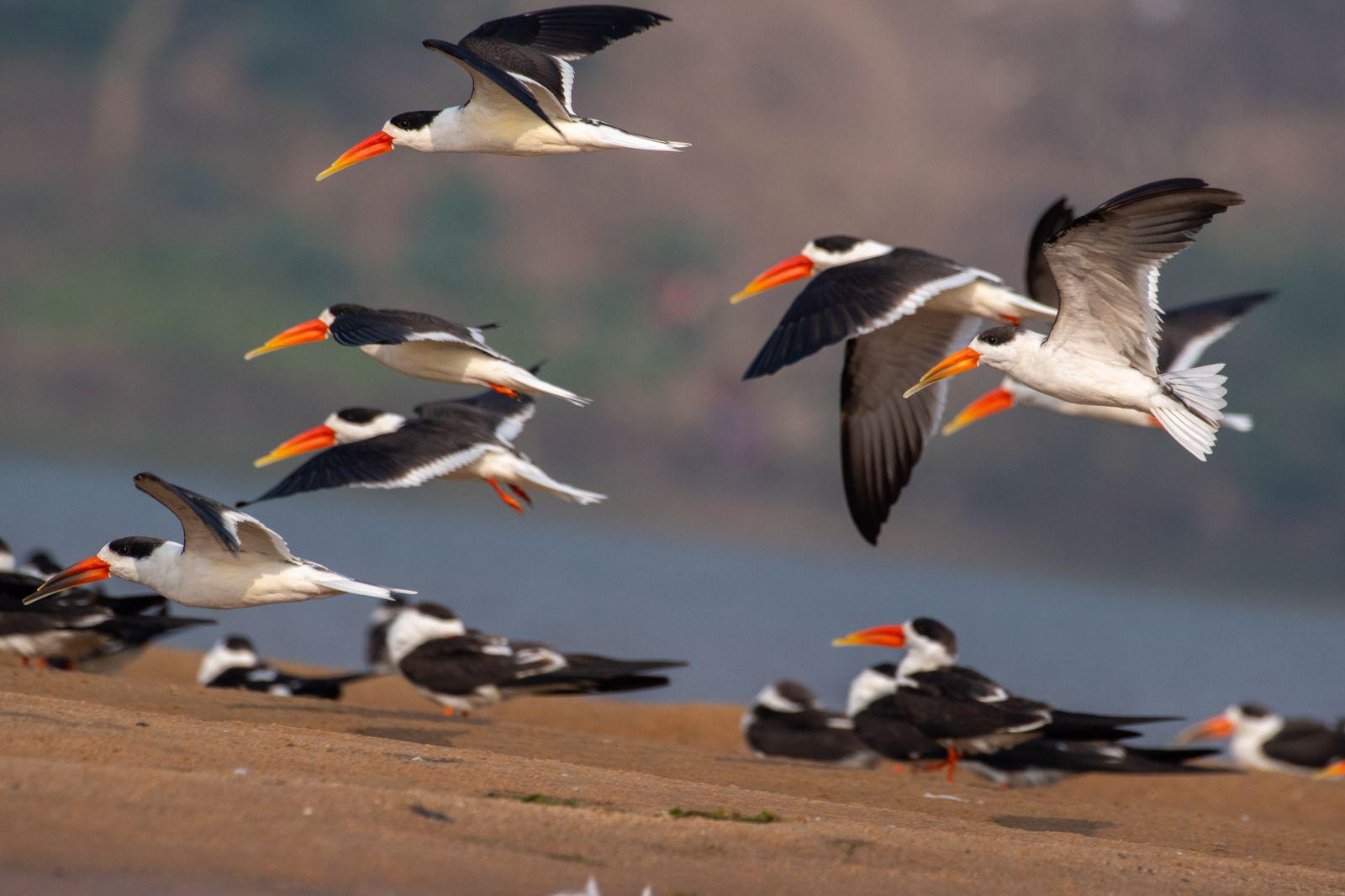
The nests are unique which resemble as scoops in the sand, with eggs laid directly on the sand. They breed in colonies of up to 40 pairs. More often other birds like river terns are found to lay eggs in the same nest. The peak egg-laying period is in April. The parental care is beautifully done by both parents. The female guards the eggs and males transport water in their wings to keep them moist. The eggs of Indian Skimmer hatch in 22 days and the young begin to fly about a month after hatching. After two months the parents and young leave the breeding habitat. Generally, Skimmers depart the colony by August. It is found that the nesting success is very low. In Odisha, 60 percent of eggs survive hatching and 30 percent of chicks survive due to very high rates of egg and chick mortality.
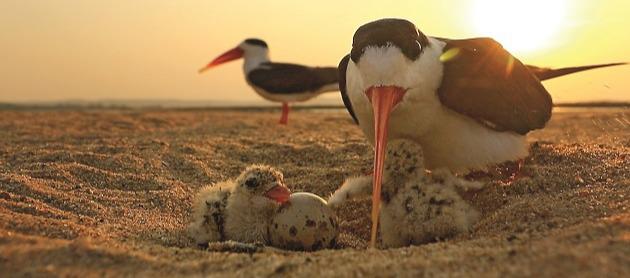
Nesting areas of Indian Skimmer are under threat from other natural predators as well as anthropogenic activities. Natural predators of skimmer eggs and chicks include birds like house crows, grey herons, brown-headed gulls, black kites, and reptiles like Indian monitor lizards. Moreover, water pollution due to agricultural and industrial chemicals affects the skimmers that depend on the rivers for food. The rampant movement of fishing boats causes disturbance and activities like sand mining have long-term effects on nesting. When the water level is too low, the sandbars get connected with riverbanks which results in nest predation by dogs, trampling by grazing cattle, accidental trampling by people. In Odisha, there are reports of egg collection by local people for consumption.
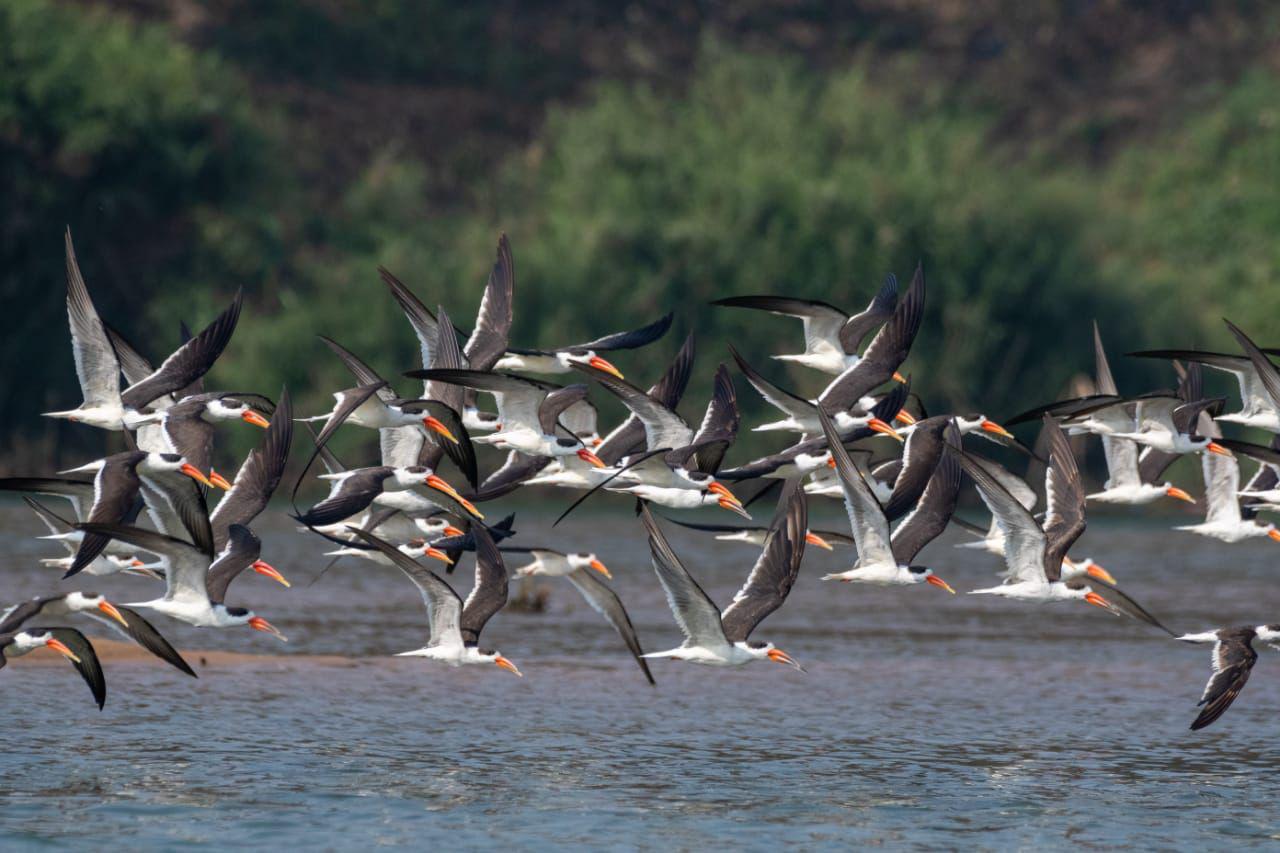
Indian Skimmer was listed as Vulnerable by the IUCN(International Union for Conservation of Nature) in the year 1994. The decreasing population has led it to be classed as Endangered by the IUCN in the year 2020 and it is therefore considered to be facing a very high risk of extinction in the wild. It has gone through a substantial decline throughout South East Asia. It was formerly widely distributed across the Indian Subcontinent. But it is presently confined only to India, Pakistan, Bangladesh, Nepal and Myanmar. It is considered extinct in China, Cambodia, Laos and Viet Nam. Indian Skimmer is now almost completely restricted to India as a breeding bird, with only occasional breeding in western Bangladesh.
According to the latest estimates of BirdLife International, the total number of Indian Skimmers left in the world is 2,500-3,000. Sufficient data is not available to show population trends for this species. The fourth Indian Skimmer count, held on January 2024 by BNHS (Bombay Natural History Society) and Bird Count India estimated a total count of 1812 Indian skimmers from 41 locations in India and Bangladesh. All 1812 birds were counted in India, and no Indian Skimmer was reported in Bangladesh. In Odisha, the total count of 356 Indian Skimmers has been reported in this estimate.
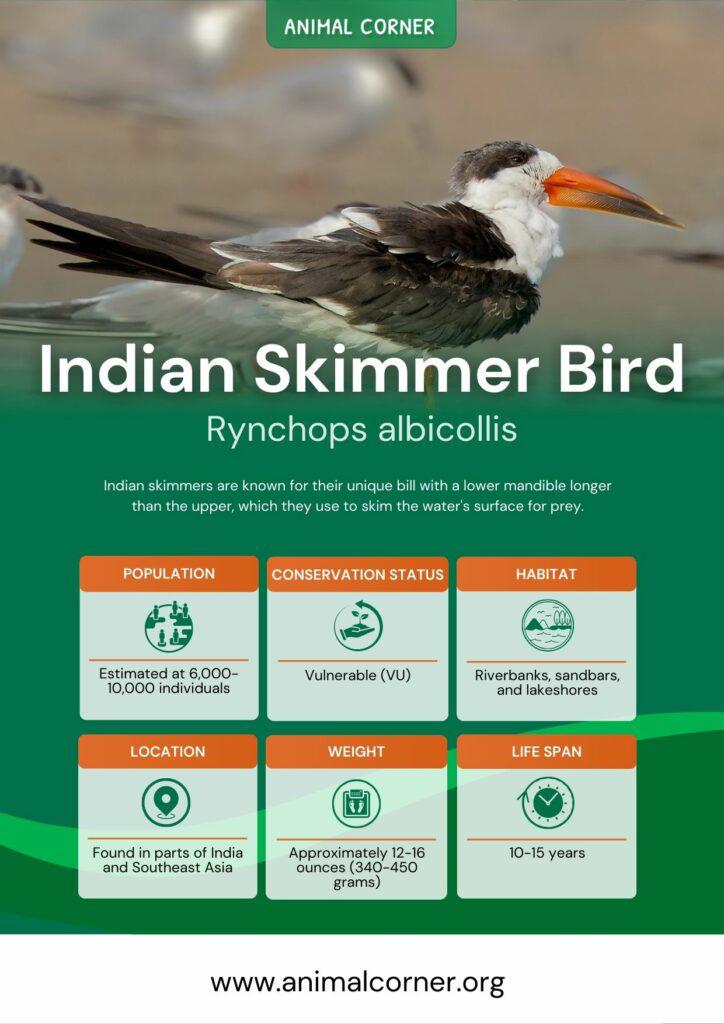
It has been reported that Indian Skimmer is suffering a continuing decline of more than 20 percent in the past 11 years which is just two generations of the Indian Skimmer. The generation length of an Indian Skimmer is 5.3 years. If this species is not protected now, it’s estimated that 46 percent of the remaining Indian Skimmers could be lost in 17 years which is the next three generations of the bird.
To protect this endangered bird from extinction there is an urgent need for conservation schemes with community involvement. The participation of local people is very important in the conservation of Indian Skimmers because locals know the habitat and the region where the birds congregate, nest and breed. Through collaborative actions, we can save these exceptional birds and the ecosystems.
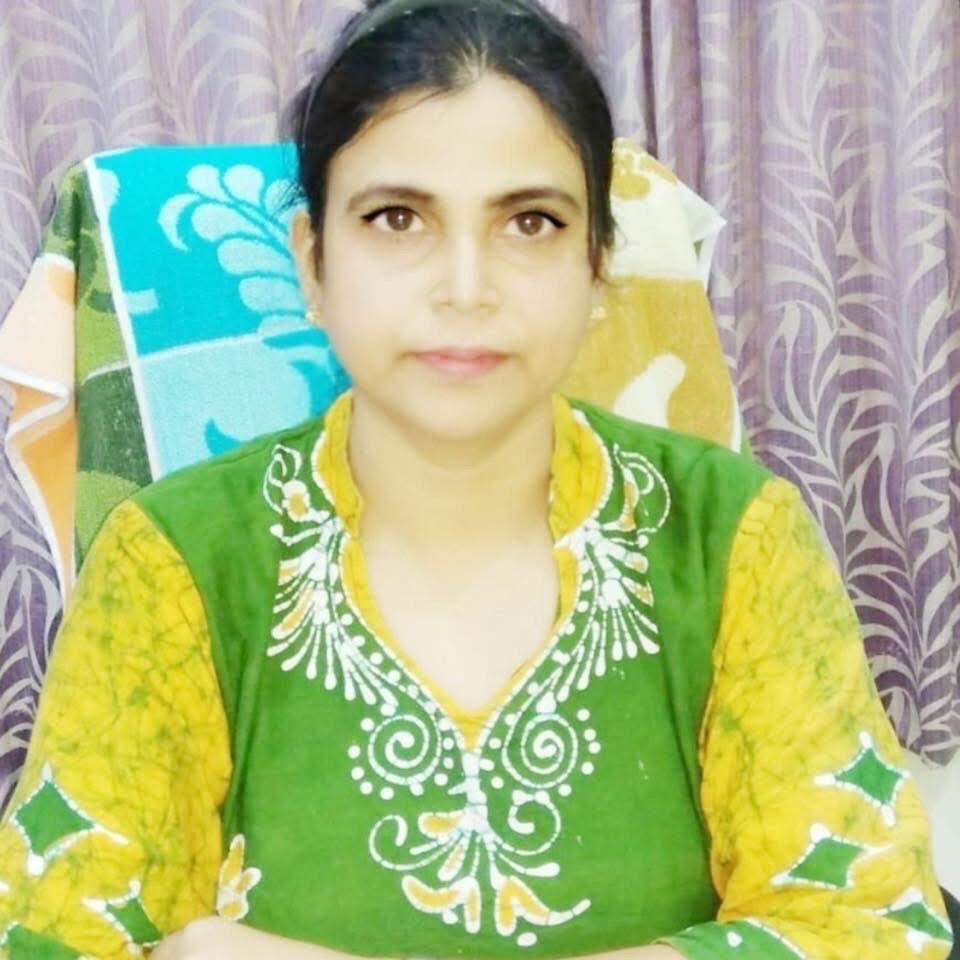
Sasmita Lenka
Deputy Conservator of Forests
and
Deputy Director, Lokayukta Odisha
Comments (10)









